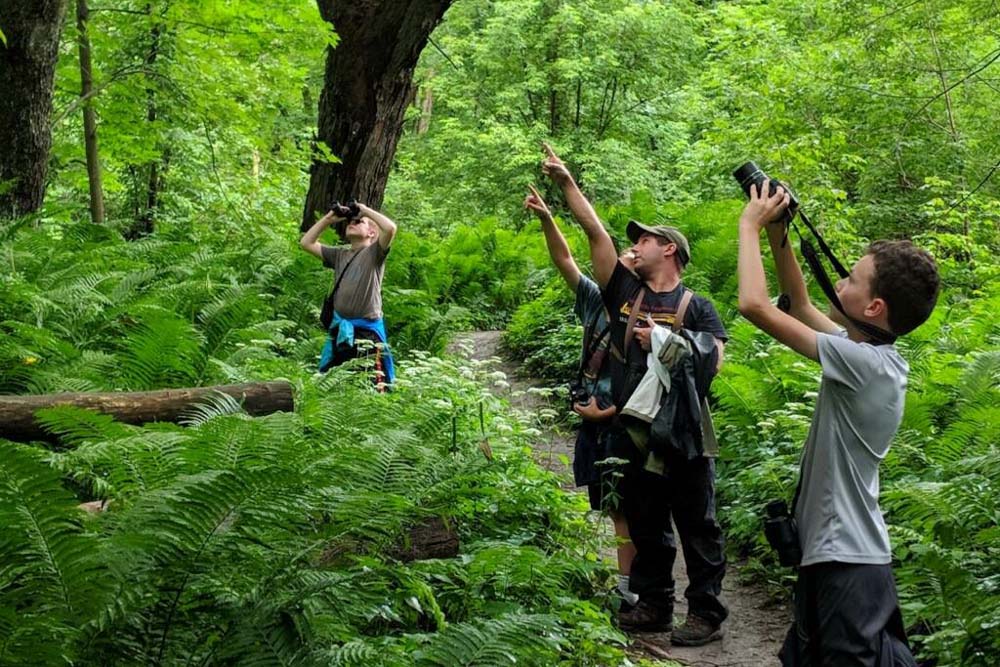Have you ever paused to consider the intricate tapestry of life flourishing in your own backyard? Nature, in all its grandeur and minute detail, oftentimes unveils a treasure trove of wonders that are simply heartbreaking to overlook. The concept of a young naturalist encourages individuals, especially the youth, to embrace the beauty and complexity of their immediate environment. With this compelling perspective, we delve into the vibrant ecosystem present in our neighborhoods and explore how even the smallest patch of greenery can be transformed into an awe-inspiring space for exploration and discovery.
At the heart of our neighborhoods, a wealth of biodiversity lies waiting to be uncovered. From the chirping birds perched on tree branches to the fluttering butterflies that dance from flower to flower, observing these astonishing creatures necessitates not only vigilant eyes but an inherent curiosity. Young naturalists embody this sense of wonder. They are observers and partakers of the natural world, driven by a desire to learn and protect their environment.
In observing your surroundings, it is imperative to adopt an inquisitive stance. Equip yourself with a magnifying glass and venture into the local park or green space. You might discover the riveting world of insects scarcely visible to the naked eye. Ants, for example, are not merely small creatures scavenging for food; they are integral components of the ecosystem, meticulously sculpting their environment while exhibiting complex social behaviors. A young naturalist’s keen observation can transform these once-overlooked insects into fascinating subjects of study.
Equipped with field guides and an unquenchable thirst for knowledge, one can embark on a delightful journey of identification. Consider the ephemeral beauty of the local flora. In urban landscapes, native plants such as coneflowers, goldenrods, and wildflowers attract pollinators like bees and butterflies, creating a dynamic interplay of life. Documenting the growth and seasonal changes of these plants fosters a profound appreciation for the cyclical patterns of nature. Young naturalists are often encouraged to keep nature journals, which not only serve as a record of their observations but as a catalyst for artistic expression as well.
The auditory symphony of your neighborhood is another dimension of nature often disregarded. The melodious chirps of sparrows, the haunting calls of owls, and even the rustling of leaves in the wind compose a harmonious soundscape. Young naturalists can actively engage with this auditory realm by practicing birdwatching, a fulfilling activity that heightens awareness of local wildlife. Armed with a pair of binoculars, they can uncover the secret lives of feathered inhabitants and learn about their habits, diets, and nesting behaviors.
Of equal significance is the body of water close by—it may be a pond, stream, or even a rain garden. Such aquatic environments are teeming with life. Engaging with this aspect of nature opens vast portals to understanding water quality, the importance of wetlands, and the myriad organisms that thrive therein. Young naturalists can conduct simple water tests, assess the presence of macroinvertebrates, or engage in litter clean-up initiatives. These activities not only nurture scientific understanding but also instill a sense of stewardship for local aquatic ecosystems.
In addition to observing flora and fauna, young naturalists can delve into the rich narratives that nature in their neighborhood offers. Every tree has a history; each rock holds a tale. Engaging in bioblitz events—community gatherings aimed at cataloging local species—allows budding naturalists to collectively document the biodiversity in their area. This collaboration fosters a sense of belonging, camaraderie, and shared responsibility among participants, reinforcing the notion that preservation of such precious resources is a cohesive endeavor.
Furthermore, the phenomenon of urban wildlife is a captivating theme for exploration. Even the most bustling cities are not devoid of nature; rather, they serve as a stage for resilient species that have adapted to urban habitats. Pigeons, raccoons, and even the elusive fox become integral players in the local ecosystem. Capturing candid moments of these animals can evoke vital conversations about wildlife conservation and habitat preservation. By understanding the impact of urban sprawl on animal populations, young naturalists can become advocates for coexistence and protection of these often-misunderstood species.
Electing nature as a focus of study is not exclusive to formal education. Community-based initiatives like the Youth Naturalist Program offered at organizations such as the North Branch Nature Center exemplify how engaging with nature promotes invaluable skills. Through guided hikes, workshops, and citizen science projects, young naturalists can deepen their connection to the environment and foster a lifelong commitment to ecological awareness.
In conclusion, the journey of a young naturalist in discovering the abundant nature within their neighborhoods is both a rewarding and transformative experience. With open eyes and an insatiable curiosity, every child has the potential to become an ambassador for the natural world. Not only does this endeavor nurture a profound respect for the intricate relationships that exist within the ecosystem, but it also fosters lifelong skills in observation, documentation, and advocacy. Ultimately, encouraging young naturalists to explore their surroundings grants them a unique lens through which to appreciate and protect the irreplaceable beauty of nature—one neighborhood at a time.









Leave a Comment